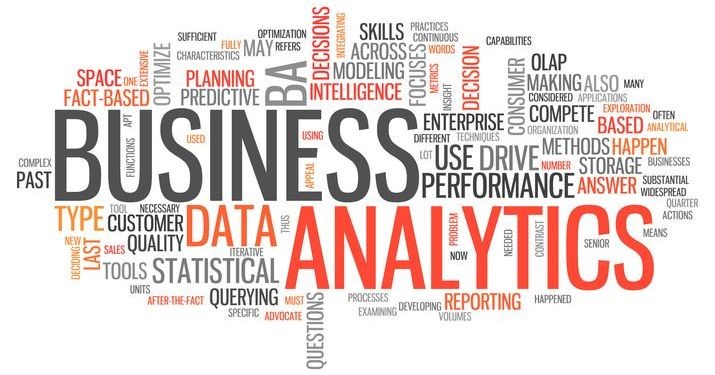The systematic method business analytics uses transforms raw data into useful business insights. It comprises multiple technical processes meant to guarantee precision, dependability, and decision-making worth. Every level emphasizes data manipulation, modelling, and visualization. Through this process companies may identify trends, predict outcomes, and use predictive analysis and quantitative data to guide smart strategic decisions. Through cutting-edge analytic techniques and instruments, the Business Analytics Certification Program enables experts to become expert data analysts and decision-makers.
What Is Business Analytics?
The method of analysing data to enable wise corporate decisions is known as business analytics. It helps companies spot trends and patterns. Businesses use analytics to measure performance and improve output. It is built on statistical analysis, data mining, and predictive modelling. Analysts interpret information from many sources in search of insights. These ideas assist with issue-solving and strategic planning. Business Analytics Online Course also helps risk management and predicting. It helps businesses to grasp market trends and consumer behaviour. This knowledge helps decision-makers to develop more effective company plans. Essential role are tools for business analysis such Power BI, Tableau, and Excel. They offer a clear display of data and aid in visualising it. Business analytics helps every sector to have a competitive edge. It transforms unprocessed data into useful knowledge. Businesses may make quicker and wiser decisions with it. Through data-driven activities, business analytics guarantees expansion.
Major Processes Involved In Business Analytics
Business analytics operates by means of methodical processes that transforms unprocessed data into usable insights. Every stage is critical to ensure accurate understanding and reliable decision-making. These procedures produce strategic business results through disciplined data management, modelling, and interpretation.
1. Data Collection
Data gathered from various sources starts the process. These sources comprise transactional systems, business databases, internet platforms, and IoT sensors. Data engineers compile organized, semi-structured, and unorganized data. Every sort of data calls for a different handling strategy. Relational databases host structured data; text, photographs, or movies hold unstructured information. The general dependability of the analytic model depends on the process’s accuracy. To keep uniformity, data collecting has to adhere to a specified governance structure.
2. Data Cleaning
Data cleaning guarantees the validity and quality of gathered data. Analysts find inaccuracies, missing values, and duplicate records. This stage gets the data ready for analysis by eliminating contradictions. This objective is frequently achieved with sophisticated instruments including SQL and Python Pandas. Normalizing values, correcting data formats, and outlier deletion define data scientists. Clean data helps for better analysis and allows for accurate findings. Predictive models can generate inaccurate results if this procedure is not followed. A Business Analytics Course in Gurgaon offers in-depth training in data visualization, predictive modelling, and statistical techniques for real-world business applications.
3. Data Integration
Combining several datasets into a single format, data integration mixes several sets of data. This process generates one view for analysis by matching data from several systems. Among other integration tools, Talend, Informatica, and Apache Nifi automate this process. The combined dataset allows for cross-departmental insights and advanced analysis. Moreover, helps companies maintain a single source of truth. It ensures that decisions are based on precise and consistent information.
4. Data Analysis
Data analysis converts processed information into insightful observations. Analysts use descriptive, diagnostic, predictive, and prescriptive models. Descriptive analysis clarifies what occurred. Diagnostic analysis discovers causes for what occurred. Predictive analysis projects future results using statistical models. Prescriptive analysis suggests the best course of action. Every kind of analysis calls for statistical methods employing R, SAS, or Python libraries such NumPy and Scikit-learn. This procedure generates quantifiable knowledge directing company operations.
5. Data Visualization
Graphical presentations of data insight are To present findings, analysts utilize interactive reports, charts, and dashboards. Visual interpretation is made possible by Tableau, Power BI, and Qlik Sense, among others. Visualizations improve understanding by presenting intricate patterns via intuitive images. Decision-makers grasp information more quickly and act clearly. This mechanism connects technical analysis with strategic decisions.
6. Model Building And Validation
Model construction entails forecasting or categorizing results using machine learning algorithms. Using historical data, analysts create models and assess performance using validation sets. Methods including regression, decision trees, and neural networks guarantee correctness. Model validation assesses the consistency and repeatability of the projections. It guarantees that the model avoids overfitting and generalizes on new data. This process is fundamental to both predictive and prescriptive analysis.
7. Deployment And Monitoring
Deployment brings the analytic model into the production context. It brings analytic ideas into daily company activities. Monitoring guarantees the model’s effective performance over time. Analysts monitor performance measures and retrain models when accuracy decreases. Constant monitoring guarantees sustained value and adaptability in shifting situations.
| Process | Description | Key Tools/Techniques |
| Data Collection | Gathers data from multiple sources | SQL, APIs, Data Warehouses |
| Data Cleaning | Removes errors and inconsistencies | Python, Pandas, Excel |
| Data Integration | Merges datasets into a single structure | Talend, Informatica, Apache Nifi |
| Data Analysis | Derives insights through statistical models | R, SAS, Python |
| Data Visualization | Presents insights through visual reports | Tableau, Power BI, Qlik Sense |
| Model Building | Creates predictive and prescriptive models | Scikit-learn, TensorFlow, SPSS |
| Deployment And Monitoring | Integrates models into workflows and tracks performance | AWS SageMaker, Azure ML, Databricks |
Conclusion
Business analytics operates via a series of connected activities. A reputed Business Analytics Institute in Delhi provides industry-focused education that prepares learners for high-demand roles in data-driven business environments. Every procedure improves data interpretability, dependability, and quality. Together they lay the ground for ongoing company expansion and wise decision-making.
